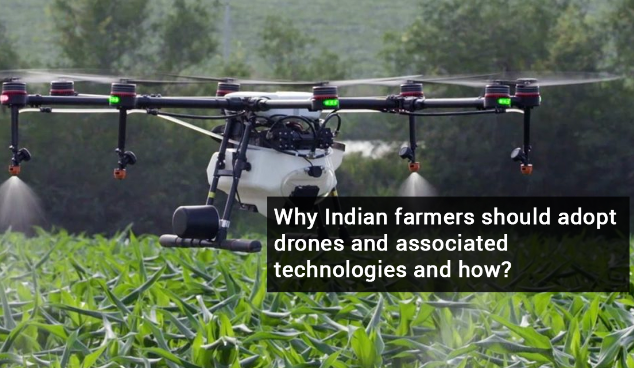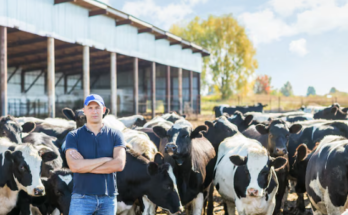India has used traditional methods of agriculture for generations, but with 1.4 billion people now dependant on the crops farmers produce, some are turning to technology to boost productivity and profit.
### Artificial Intelligence Comes to Farming in India
Artificial Intelligence (AI) is rapidly transforming agriculture in India, providing farmers with innovative tools and solutions to boost productivity, reduce costs, and manage resources more efficiently. In a country where over 60% of the population depends on agriculture for their livelihood, AI has the potential to revolutionize the farming landscape. By helping farmers make data-driven decisions, AI technology can increase crop yields, optimize resource usage, and improve overall farm profitability. Here’s a detailed look at how AI is making farming more efficient, focusing on spending budgets, release dates, success factors, and site considerations for farmers in India.
#### Budget Planning for AI in Indian Farming
Adopting AI in farming requires an initial investment in technology and infrastructure, but the long-term benefits far outweigh the costs. The initial budget will depend on the type of AI solutions chosen, ranging from basic mobile apps to advanced AI-powered systems that use sensors, drones, and satellite imaging. For smaller farmers, there are affordable AI-powered mobile apps that provide real-time data on weather patterns, soil health, and crop management. These apps can cost between ₹5,000 to ₹10,000 annually, making them accessible even to smallholder farmers.
Larger AI systems, such as autonomous tractors, drone-based crop monitoring, or automated irrigation systems, can be more expensive. These systems may cost anywhere between ₹3 lakh to ₹10 lakh, depending on their complexity. However, many farmers can access government subsidies or partnerships with agri-tech companies that provide financial support or leasing options. By reducing the need for manual labor, minimizing crop loss, and optimizing input costs, AI can help farmers recover these costs within a few seasons. In the long run, AI can increase profitability by improving crop yields and resource management.
#### Release Dates and AI Solutions for Indian Farmers
AI-powered solutions are being rolled out gradually across India, with different release dates depending on the technology being implemented. For instance, AI-based weather prediction tools and crop advisory services have been available in India for a few years, and these are seeing widespread adoption among farmers. Companies like IBM’s Watson and Microsoft’s AI tools have partnered with local agriculture startups to provide farmers with weather forecasting, pest detection, and crop management advice.
More advanced AI systems, such as autonomous machinery or drone monitoring, are still in the pilot stage in many regions of India. However, the government and private companies are working to make these solutions more widely available through subsidies, pilot projects, and training programs. As these technologies become more affordable and accessible, their adoption will likely increase, bringing AI-powered farming solutions to the forefront of Indian agriculture.
#### Success Factors for AI Adoption in Indian Farming
Several factors contribute to the success of AI in Indian agriculture. First, the availability of data is crucial for AI to function effectively. Farmers need access to high-quality data on soil health, weather conditions, and crop performance. To facilitate this, AI solutions often integrate with IoT (Internet of Things) devices, sensors, and satellite imagery to collect real-time data.
Secondly, education and training play a vital role in the successful implementation of AI in farming. Many farmers, particularly in rural areas, may not be familiar with technology. For AI to be effective, farmers must be trained to use these new tools, understand the insights provided, and apply them to improve their farming practices.
Lastly, affordability and access to technology are key to widespread adoption. Government support and public-private partnerships are essential to making AI solutions financially viable for smallholder farmers, who make up the majority of the agricultural workforce in India.
#### Farm Site Considerations for AI Integration
While AI can be implemented on various types of farms, certain conditions can make the integration more successful. For instance, farms located near urban centers or in regions with better internet connectivity are more likely to benefit from AI technologies, especially those that rely on cloud-based platforms. These regions can also attract more agri-tech companies, providing easier access to cutting-edge AI solutions.
In contrast, farms in remote, rural areas with limited internet access may face challenges in adopting AI. However, with the increasing rollout of 4G and 5G networks across India, the gap in connectivity is slowly closing, allowing AI tools to reach even the most distant corners of the country. Moreover, AI-powered tools that can operate offline, such as mobile apps or simple IoT devices, are becoming more common and accessible for farmers in these areas.
#### Conclusion
Artificial intelligence is a game-changer for Indian agriculture, offering farmers innovative ways to improve productivity, optimize resource usage, and reduce costs. While the initial investment may seem high, the long-term benefits—such as increased crop yields and reduced labor costs—make AI an attractive option for Indian farmers. As more AI solutions become available and affordable, and as farmers receive the necessary training and support, the future of farming in India looks promising. By embracing AI, farmers can increase their profitability and ensure the sustainability of their crops for years to come.



